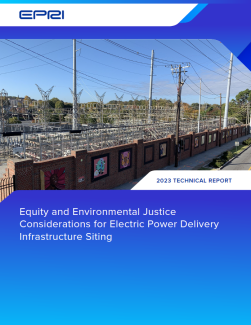
Currently, the U.S. is undergoing a shift in the energy sector that has the potential to significantly impact—in a positive or negative manner—equity and environmental justice (EEJ). A positive impact will likely require a shift in perspective and the willingness to change historical practices and approaches, respect the experience and priorities of other groups, and engage them to create collaborative relationships. Awareness of these challenges and the development of solutions has been evolving, and power delivery projects have a unique opportunity to implement EEJ principles over large areas of the population.
The transition to no- and low-carbon energy intersects with the expectation to meaningfully address historical and avoid new inequity and environmental injustices. An array of tools, principles, and practices have emerged that provide a path for navigating community impacts and engagement to break from the legacies of EEJ injustices during the transition to cleaner energy sources. Integrating EEJ practices in the planning, development, and eventual operation of power delivery projects not only benefits communities, it may also help minimize opposition to these projects.
This report presents a set of practical approaches that power delivery project developers can deploy to meaningfully incorporate EEJ principles in project planning, development, construction, and operation. This report first identifies common differences that arise between project proponents and EEJ communities during the development of power delivery infrastructure, and then explores approaches for anticipating, mitigating, and responding to those differences.
ELI developed this whitepaper in partnership with the Electric Power Research Institute (EPRI).